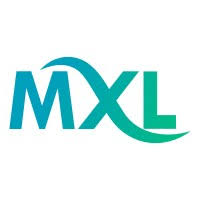
Maxlearnmicrolearning1125
Uploaded on Jul 8, 2025
In today's dynamic business environment, effective training is paramount, yet traditional methods often fall short. Microlearning, with its agile and digestible approach, offers a powerful alternative. However, successful implementation isn't just about creating short videos; it requires a strategic roadmap. Platforms like MaxLearn advocate for a structured approach, distilling the process into six key steps to ensure your Microlearning Application truly maximizes engagement and impact. Step 1: Define Clear Learning Objectives Before creating any Microlearning Courses, it's crucial to identify what your learners need to achieve. Each microlearning snippet should address a single, specific learning outcome. What knowledge gap are you closing? What skill are you building? Without precise objectives, your microlearning efforts risk being unfocused. Industry Example (Healthcare): Instead of "Understanding patient care," an objective might be "Proper procedure for administering insulin injections." Tools Connection: This step informs the content you'll create using Microlearning Authoring Tools. Step 2: Segment Content into Digestible Chunks This is the essence of microlearning. Break down larger topics into small, self-contained units. Avoid information overload. Each segment should be short enough to be consumed quickly, typically within 1-15 minutes. Industry Example (Finance/Banking): A complex "Anti-Money Laundering (AML) Compliance" course can be broken into snippets like "Identifying Suspicious Transactions," "Reporting Requirements," and "Understanding KYC Regulations." Tools Connection: This step directly utilizes the capabilities of Microlearning Tools and Microlearning Software to manage and deliver these segmented pieces. Step 3: Choose the Right Delivery Formats Microlearning isn't just video. It can include infographics, interactive quizzes, short text modules, simulations, audio clips, or even quick reference cards. The format should align with the content and the learning objective. Industry Example (Retail): A new product launch might use a short video for key features, an infographic for specifications, and a quiz for sales associate knowledge checks. Tools Connection: A versatile Microlearning Platform and AI-powered Authoring Tool will offer a range of content creation options to support diverse formats. Step 4: Leverage the Right Technology and Platforms Effective microlearning relies heavily on robust technology. Invest in a dedicated Microlearning Platform designed to host and deliver these short modules seamlessly across various devices. An AI-Powered Learning Platform is particularly beneficial here, as it can personalize the learning experience, recommending relevant snippets based on individual performance and needs, thereby maximizing learner engagement. Industry Example (Oil & Gas/Mining): Field workers need mobile-friendly access to safety procedures or equipment operation guides via a robust Microlearning Platform that works offline or in low-connectivity areas. Tools Connection: This involves selecting a comprehensive Microlearning LMS that integrates with your Microlearning Software and potentially an AI-powered Authoring Tool for streamlined content creation and delivery. Step 5: Promote Accessibility and Just-in-Time Learning For microlearning to be truly effective, it must be accessible at the "moment of need." Employees should be able to quickly find and consume the relevant information precisely when they encounter a challenge or require a refresher. This means intuitive search functions and mobile compatibility are crucial. Industry Example (Insurance): An insurance agent needs immediate access to policy details while talking to a client. A quick search on the Microlearning Platform provides the answer. Tools Connection: A well-designed Microlearning Application on mobile devices is vital for this step, ensuring ease of access. Step 6: Measure and Iterate for Continuous Improvement Implementation isn't a one-time event. Track learner engagement, completion rates, and performance improvements. Gather feedback and use data from your Microlearning Platform analytics to identify areas for improvement. This iterative process ensures your Microlearning Courses remain relevant and effective. Industry Example (Pharma): After a training module on a new drug, track sales team performance to see if knowledge uptake led to better sales conversations, using data from the Microlearning LMS. Tools Connection: The analytics features within your Microlearning Software and AI-Powered Learning Platform are critical for this continuous feedback loop.

Comments